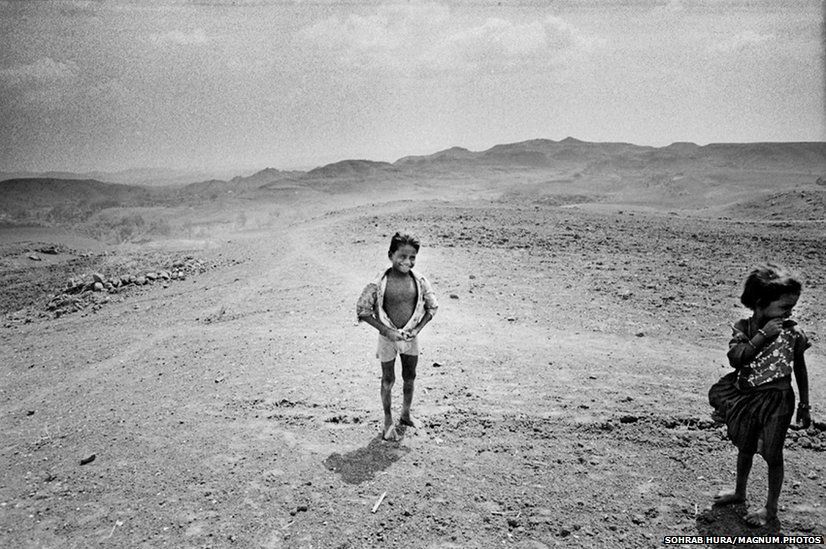In pictures: Life in denuded India villages
- Published

Pati, a cluster of villages in the central Indian state of Madhya Pradesh, was once dotted with lush forests. In recent years, deforestation has turned the place virtually into a desert. Sohrab Hura, who recently become only the second Indian photographer to become a member of Magnum Photos, the famed international co-operative of photographers, has been chronicling life in the area since 2006.
Water is scarce here and the region is heavily dependent on rainfall. Summers are usually very hot and monsoons often arrive late.
A family feeding its two bullocks. Bullocks are the most important indicators of wealth in this region since agriculture is the prime source of livelihood here.
The population of this region primarily consists of the Barela tribal community.
It is not uncommon to find the remains of homes of people who left Pati to find a better life elsewhere.
India's ambitious employment generation scheme for poor people - where the authorities are bound by law to provide a minimum of 100 days of employment a year to every rural home - has helped stem the migration of people who leave the area to find jobs elsewhere.
Under the scheme, villagers build local infrastructure like roads, small dams, ponds and buildings. Here, residents make their way to a work site.
Kaap Singh is one of the unemployed villagers who has found work under the employment generation scheme.
Rekha gave birth to a baby girl at home because there was no doctor available. The closest basic medical facility is a day’s walk away and no conveyance was available at the time of the child birth.
Women workers huddle together to give in their attendance at a work site.
There are often delays in paying wages for work under the scheme. Women lead a protest against the non-payment of wages.